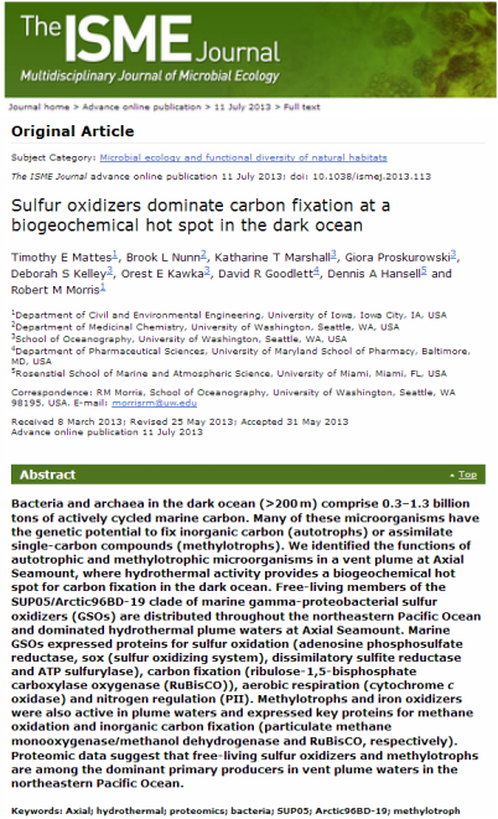Hydrothermal Vent Bacteria
Published in Nature: The ISME Journal
Mattes, T., Nunn, B., Marshall, K. et al. Sulfur oxidizers dominate carbon fixation at a biogeochemical hot spot in the dark ocean. ISME J 7, 2349–2360 (2013). https://doi.org/10.1038/ismej.2013.113
Mattes, T., Nunn, B., Marshall, K. et al. Sulfur oxidizers dominate carbon fixation at a biogeochemical hot spot in the dark ocean. ISME J 7, 2349–2360 (2013). https://doi.org/10.1038/ismej.2013.113
A short article on the research can be found here: Deep-ocean carbon sinks
